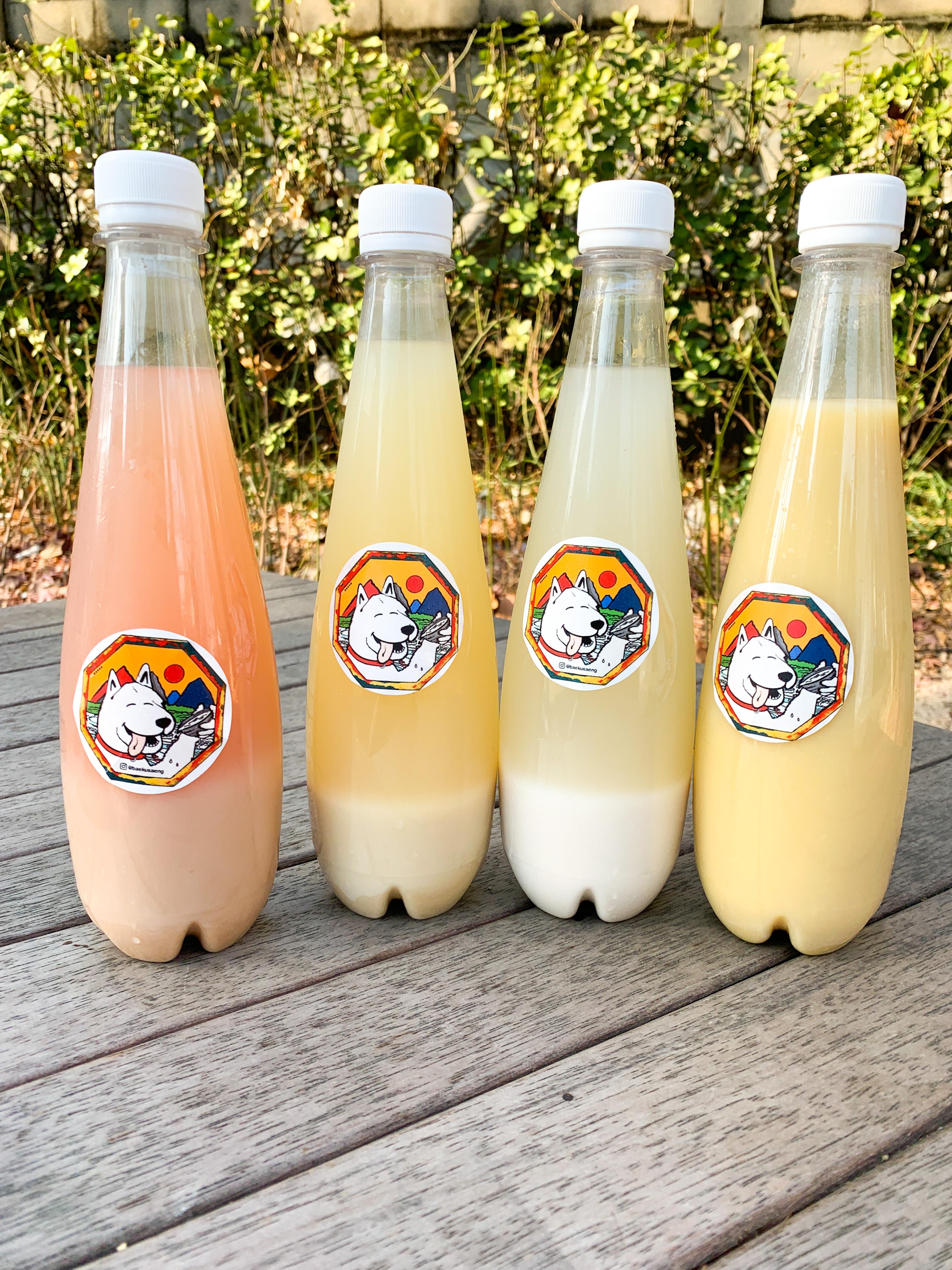
Many folks out there haven’t had the pleasure of getting to know Makgeolli, and even if they have, their choices and knowledge about this iconic Korean drink might be a tad limited. You know, maybe they’ve spotted it at their local Korean supermarket, given it a shot, and thought, “Eh, it’s not too shabby,” and then promptly moved on. To be completely honest, if I’d only ever tried pasteurized or budget-friendly Makgeolli available abroad, I probably wouldn’t have been all that thrilled either.
But here’s the cool part: there are a select few who’ve had the awesome opportunity to visit Seoul and experience the authentic, premium, and artisanal Makgeolli. They’ve taken classes, gotten inspired, and decided to embark on this exciting new journey as homebrewers of Makgeolli.
# 1 - No fancy equipment

Everything you need to make Korean rice wine or Makgeolli, you probably already have at home.
For many years I homebrewed Makgeolli in my tiny one room studio, and I can proudly say I’ve made both awesome and horrible batches, but it was all a great learning experience.
The only piece of equipment I recommend getting is a steamer. Please don’t put your rice in a rice cooker or cook your rice and then place it in the dehydrator, as Maangchi does. I really like Maangchi, but unfortunately, I’m not a fan of her Makgeolli-making skills.
Check out our page on how to make Godubap or chewy rice correctly, and what to look out for when making Makgeolli.
# 2 - A great introduction to fermentation



If you haven’t brewed anything before, you’ll find the process quite enjoyable, as it feels more like cooking rather than technical brewing.
Personally, I started with homebrewing beer because of my growing interest in craft beer. I still love beer, but I discovered that it’s a bit more technical than I initially imagined. Plus, the constant need for sanitizing every little thing was a bit of a hassle for me, especially when I was working with Star San – it made quite a mess.
When it comes to Makgeolli, you get to use your hands and infuse your unique “hand flavor.” In Korea, we’re known for our “Slow Food” culture, as many of our foods are fermented, and once again, we rely on our hands for everything we prepare, including side dishes, kimchi, and, of course, Makgeolli. It adds a personal touch to the process that makes it all the more special.
# 3 - Enjoy different variations

After finishing the fermentation of your Makgeolli, you can savor various variations of it. For instance, when you filter it without adding any water, you get your Wonju, which is the original premium Makgeolli. Depending on the recipe, this Wonju may have different alcohol percentages. For a single-step fermentation Makgeolli, it will typically have about 12 to 13% ABV, making it a premium Makgeolli.
If you don’t feel like drinking your Wonju, you can put it back into a vessel and wait for the separation to occur. This is your Cheongju, or clear rice wine part, which you can also enjoy. Sometimes people advise, “Don’t shake the entire Makgeolli bottle.” The reason behind this advice is that they want you to try the Cheongju. However, I’d recommend doing this primarily for high ABV types of Makgeolli, not for those with only 6 percent or the regular Makgeolli you find in the market, as they tend to be quite watery.
Lastly, if you’re interested in distillation, you can use this Cheongju to make real, traditional Soju.
#4 - Parallel Fermentation and Making Your Own Creations

As I mentioned earlier, the more you delve into the process of making Makgeolli, the more it begins to resemble cooking. Once you have your main ingredients: steamed rice or “고두밥” (godubap), water, and Nuruk, that’s when the fun begins. You get to decide what to add to your Makgeolli, and that’s the exciting part. You can incorporate fruit juice, real fruit, dried fruit, or instead of using plain water, you can opt for tea water, creating a Kombucha-like Makgeolli, combining the best of both worlds. The possibilities for experimentation are boundless. As you continue to brew, take notes, and refine your process, you’ll discover a few favorite ingredients that you’ll love to brew with regularly.
For us at Baekusaeng Makgeolli, it all started with ginger, and it has remained our signature Makgeolli ever since.
# 5 - Enjoy it with your favorite Korean meals

If you want to fully savor a meal, having a good drink alongside it is an absolute must. Rinse and repeat, and that’s precisely what Makgeolli is renowned for. It effortlessly washes away the richness of a Korean Pajeon with its slightly sweet and tart, well-carbonated character.
However, the beauty of learning how to homebrew and craft your own Makgeolli lies in the fact that you can experiment with different recipes. Personally, I adore making and enjoying thicker-textured Makgeolli as a dessert to conclude a meal, and I opt for a lighter, non-carbonated, and drier Makgeolli when enjoying traditional Korean dishes.
For me, making Makgeolli has paved the way to become a unique type of brewer, and I relish the opportunity to demystify and share the wonders of this ancient art. This is especially meaningful as a Korean foreigner who has spent a considerable amount of time living overseas, and it has become a way for me to reconnect with my native Korean roots.
Whether you are Korean, a Gyopo, or non-Korean, it doesn’t matter. I sincerely hope you can explore, taste, and appreciate the full potential of Makgeolli. Cheers to the wonderful world of this Korean treasure!







